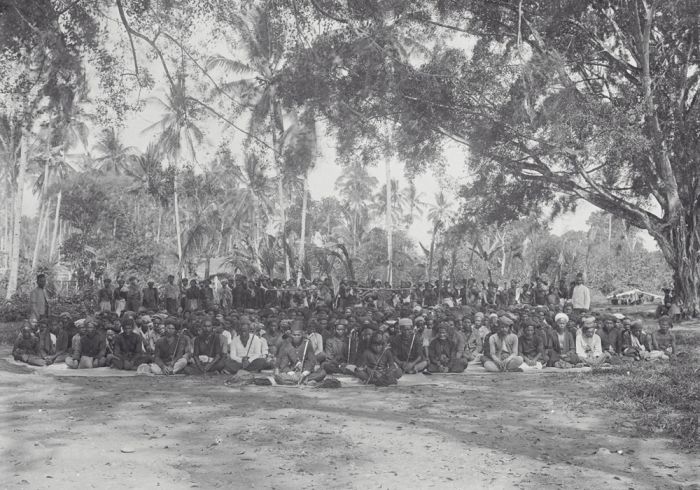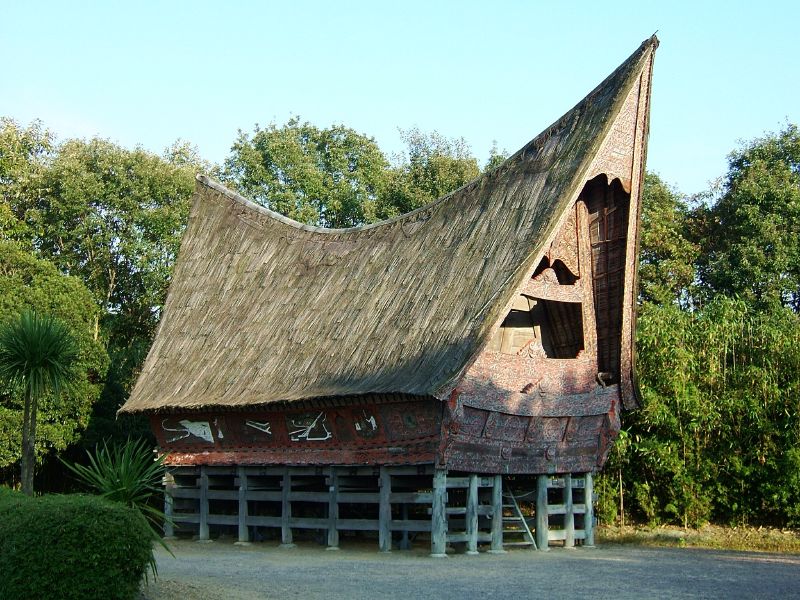|
Singkil People
Singkil people are an ethnic group of people found in Aceh Singkil Regency and Subulussalam, Aceh province, Indonesia. The customs and culture of the Singkil people are very different from the Pakpak people. This is because of the Singkil people practices Islam, whereas the majority of the Pakpak people practices Christianity. Apart from that the Singkil people have intermarried with the neighbouring ethnic group of people like Acehnese people and Minangkabau people. Language Singkil language is widely spoken in Aceh Singkil Regency, Subulussalam and part of Southeast Aceh Regency. The Singkil language is very similar to Pakpak language of North Sumatra. However, the Singkil language have its own uniqueness whereby the alphabet "R" is pronounce as "kh". For example, the word "appearance" in Bahasa Indonesia is ''Rupa'', while in Singkil language it is ''Khupa''. Culture The culture of the Singkil people itself has been greatly influenced by Islamic traditions. Although ... [...More Info...] [...Related Items...] OR: [Wikipedia] [Google] [Baidu] |
North Sumatra
North Sumatra ( id, Sumatra Utara) is a province of Indonesia located on the northern part of the island of Sumatra. Its capital and largest city is Medan. North Sumatra is Indonesia's fourth most populous province after West Java, East Java and Central Java, and also the most populous in the island of Sumatra. It covers an area of 72,981 km2. According to the 2020 census, the province's population in that year was 14,799,361. The mid-2021 official estimate is 14,936,148. North Sumatra is a multi-ethnic province. The Malay people are regarded as the natives of the east coast of the province, while the west coast of the province is mainly inhabited by the Batak (''Pakpak'', ''Angkola'' and ''Mandailing'' groups). The central highlands region around Lake Toba is predominantly inhabited by another ''Batak'' groups (''Toba'', ''Simalungun'' and ''Karo''). The Nias people are natives to ''Nias Island'' and its surrounding islets. With the opening of tobacco plantations in East S ... [...More Info...] [...Related Items...] OR: [Wikipedia] [Google] [Baidu] |
Toba Batak People
Toba people (Surat Batak: ᯅᯖᯂ᯲ ᯖᯬᯅ) also referred to as Batak Toba people are the largest group of the Batak people of North Sumatra, Indonesia. The common phrase of ‘Batak’ usually refers to the Batak Toba people. This mistake caused by the Toba people being the largest sub-group of the Batak ethnic and their differing social habit to self-identify as merely Batak instead of ‘Toba’ or ‘Batak Toba’, contrary to the habit of the Karo, Mandailing, Simalungun, Pakpak communities who commonly self-identified with their respective sub-groups. The Toba people are found in Toba Samosir Regency, Humbang Hasundutan Regency, Samosir Regency, North Tapanuli Regency, part of Dairi Regency, Central Tapanuli Regency, Sibolga and its surrounding regions. The Batak Toba people speak in the Toba Batak language and are centered on Lake Toba and Samosir Island within the lake. Batak Toba people frequently build in traditional Batak architecture styles which are common o ... [...More Info...] [...Related Items...] OR: [Wikipedia] [Google] [Baidu] |
Karo People (Indonesia)
The Karo, or Karonese, are a people of the ''Tanah Karo'' (Karo lands) and part one of Batak people sub-ethnic group from North Sumatera, Indonesia. The Karo lands consist of Karo Regency, plus neighboring areas in East Aceh Regency, Langkat Regency, Dairi Regency, Simalungun Regency and Deli Serdang Regency. In addition, the cities of Binjai and Medan, both bordered by Deli Serdang Regency, contain significant Karo populations, particularly in the Padang Bulan area of Medan. The town of Sibolangit, Deli Serdang Regency in the foothills on the road from Medan to Berastagi is also a significant Karo town. Karoland contains two major volcanoes, Mount Sinabung, which erupted after 400 years of dormancy in 27 August 2010 and Mount Sibayak. Karoland consists of the cooler high lands, and the upper and lower lowlands. The Karolands were conquered by the Dutch in 1904. In 1906, roads to the highlands were constructed, ending the isolation of the highland Karo people. The road linked Med ... [...More Info...] [...Related Items...] OR: [Wikipedia] [Google] [Baidu] |
Kluet People
Kluet or Kluwat people dwell in a number of districts in South Aceh Regency, Aceh, Indonesia namely North Kluet, South Kluet, Central Kluet and East Kluet. The Kluet people are regarded as part of the Batak people sub-ethnicity. The Kluet regions are separated by Lawé Kluet River, where it disgorges from the Mount Leuser and disembogues into the Indian Ocean. Residential region of the Kluet people is 30 km from Tapaktuan city or 500 km from Banda Aceh. Majority of the population and as well as the Kluet people practices Islam. The language spoken by the Kluet people is Alas-Kluet language, which is categorized as part of the Batak languages. The Kluet language itself is divided into three dialects, which are the Paya Dapur, Manggamat and Lawe Sawah dialect. During the colonial period, the Acehnese people are known to have had political influence on the coastal area that became known as Kluet kingdom. Therefore, the Acehnese people also had cultural influence in the cul ... [...More Info...] [...Related Items...] OR: [Wikipedia] [Google] [Baidu] |
Alas People
The Alas people is an indigenous ethnic group from Kutacane, Southeast Aceh district, Sumatra, Indonesia. The Alas are found in the Gunung Leuser, Ketambe, and Alas River areas. Van Daalen's Alas, Batak and Gayo campaign At the final stage of the Aceh War in 1904, Gotfried Coenraad Ernst van Daalen started on his campaign to Gayoland, Alasland, and Batakland in order to establish the Dutch colonial control over them. After demolishing 7 forts and killing nearly 1300 inhabitants in Gayoland, his Korps Marechaussee te voet appeared in the Alas valley on 10 June 1904. One local lord (''kejukhun'') at northern Alasland surrendered immediately, but, as the other local lord of Gayonese descent at southern Alasland had already been killed in Gayoland by Gotfried Coenraad Ernst van Daalen, his son, the acting southern local lord, and a brother of the northern local lord decided to confront the non-Islamic Dutch, building 3 forts or fortified villages. On 14 June 1904, the Dutch t ... [...More Info...] [...Related Items...] OR: [Wikipedia] [Google] [Baidu] |
Marga (Batak)
Marga is a term in Batak societies referring to a clan name. The term is derived either from the Sanskrit ''varga'', meaning company, party, or group, or, more likely, from the Sanskrit ''marga'', meaning 'road, way or path', referring to a people of 'one origin'. Batak ''marga'' are patrilineal. Marriage in the same ''marga'' is strictly forbidden by tribal law ( adat) even between people only distantly related; but it is allowed and often even arranged between cousins of the maternal line (''boru''). After marriage, Batak women do not change their family (''marga'') name, but add "boru" to their birth name. Since Batak ''marga'' are patrilineal, the children will inherit the ''marga'' from their father. In Batak Toba mythology, ''marga'' are traced to the common ancestor "Si Raja Batak" (The King of the Batak). In Karo mythology, the five ''marga'' (Merga Silima) are defined in terms of matrimonial bonds, with no importance placed on a common ancestor myth. Simalungun people ha ... [...More Info...] [...Related Items...] OR: [Wikipedia] [Google] [Baidu] |
Batak People
Batak is a collective term used to identify a number of closely related Austronesian peoples, Austronesian ethnic groups predominantly found in North Sumatra, Indonesia, who speak Batak languages. The term is used to include the Karo people (Indonesia), Karo, Pakpak people, Pakpak, Simalungun people, Simalungun, Batak Toba people, Toba, Angkola people, Angkola, and Mandailing people, Mandailing which are related groups with distinct languages and traditional customs (''adat''). Prehistory Linguistic and archaeological evidence indicates that Austronesian peoples, Austronesian speakers first reached Sumatra from Taiwan and the Philippines through Borneo or Java about 2,500 years ago, and the Batak probably descended from these settlers. While the archaeology of southern Sumatra testifies to the existence of neolithic settlers, it seems that the northern part of Sumatra was settled by agriculturalists at a considerably later stage. Although the Batak are often considered to ... [...More Info...] [...Related Items...] OR: [Wikipedia] [Google] [Baidu] |
Mufti
A Mufti (; ar, مفتي) is an Islamic jurist qualified to issue a nonbinding opinion ('' fatwa'') on a point of Islamic law (''sharia''). The act of issuing fatwas is called ''iftāʾ''. Muftis and their ''fatwas'' played an important role throughout Islamic history, taking on new roles in the modern era. Tracing its origins to the Quran and early Islamic communities, the practice of ''ifta'' crystallized with the emergence of the traditional legal theory and schools of Islamic jurisprudence (''madhahib''). In the classical legal system, fatwas issued by muftis in response to private queries served to inform Muslim populations about Islam, advise courts on difficult points of Islamic law, and elaborate substantive law. In later times, muftis also issued public and political fatwas that took a stand on doctrinal controversies, legitimized government policies or articulated grievances of the population. Traditionally, a mufti was seen as a scholar of upright character wh ... [...More Info...] [...Related Items...] OR: [Wikipedia] [Google] [Baidu] |
Ulama
In Islam, the ''ulama'' (; ar, علماء ', singular ', "scholar", literally "the learned ones", also spelled ''ulema''; feminine: ''alimah'' ingularand ''aalimath'' lural are the guardians, transmitters, and interpreters of religious knowledge in Islam, including Islamic doctrine and law. By longstanding tradition, ulama are educated in religious institutions ''(madrasas)''. The Quran and sunnah (authentic hadith) are the scriptural sources of traditional Islamic law. Traditional way of education Students do not associate themselves with a specific educational institution, but rather seek to join renowned teachers. By tradition, a scholar who has completed his studies is approved by his teacher. At the teacher's individual discretion, the student is given the permission for teaching and for the issuing of legal opinions ''( fatwa)''. The official approval is known as the '' ijazat at-tadris wa 'l-ifta'' ("license to teach and issue legal opinions"). Through time, ... [...More Info...] [...Related Items...] OR: [Wikipedia] [Google] [Baidu] |
Aceh Sultanate
The Sultanate of Aceh, officially the Kingdom of Aceh Darussalam ( ace, Keurajeuën Acèh Darussalam; Jawoë: كاورجاون اچيه دارالسلام), was a sultanate centered in the modern-day Indonesian province of Aceh. It was a major regional power in the 16th and 17th centuries, before experiencing a long period of decline. Its capital was Kutaraja, the present-day Banda Aceh. At its peak it was a formidable enemy of the Sultanate of Johor and Portuguese-controlled Malacca, both on the Malayan Peninsula, as all three attempted to control the trade through the Strait of Malacca and the regional exports of pepper and tin with fluctuating success. In addition to its considerable military strength, the court of Aceh became a noted center of Islamic scholarship and trade. History Foundation and rise The sultanate was founded by Ali Mughayat Syah, who began campaigns to extend his control over northern Sumatra in 1520. His conquests included Deli, Pedir, and Pas ... [...More Info...] [...Related Items...] OR: [Wikipedia] [Google] [Baidu] |
Minangkabau Highlands
The Minangkabau Highlands ( id, Dataran Tinggi Minangkabau, Minang: ''Minang Darek'') is a mountainous area in the province of West Sumatra, located around three mountains—Mount Marapi, Mount Singgalang, and Mount Sago—in west-central Sumatra, Indonesia. The highlands are part of the Barisan Mountains, the largest mountain range in Sumatra. They are home to the Minangkabau people who refer them as ''Alam Minangkabau'', or "the world of Minangkabau". This area formed a kingdom known from at least the 7th century as Malayu. It is probable that wet rice cultivation evolved in the highlands long before it appeared in other parts of Sumatra, and predates significant foreign contact. Inscriptions in the area have been found from the rule of Adityavarman (1347–1375). The Dutch began exploiting the gold reserves in the highlands in the 1680s. They dominated the trade in the area, severely restricting the trade outlets between the highlands and the ports on the coast between 18 ... [...More Info...] [...Related Items...] OR: [Wikipedia] [Google] [Baidu] |









